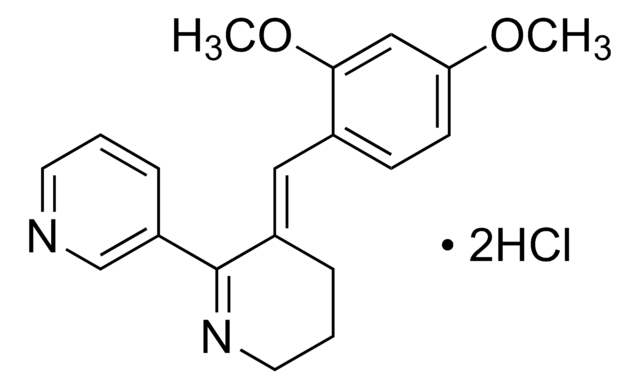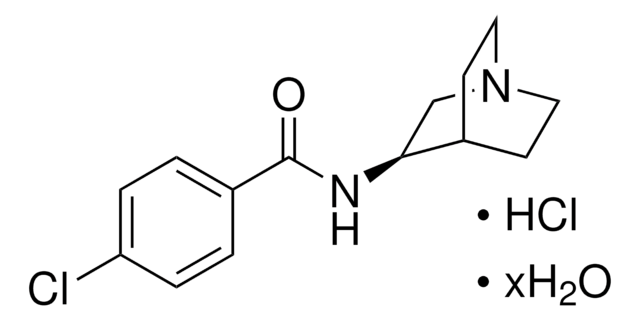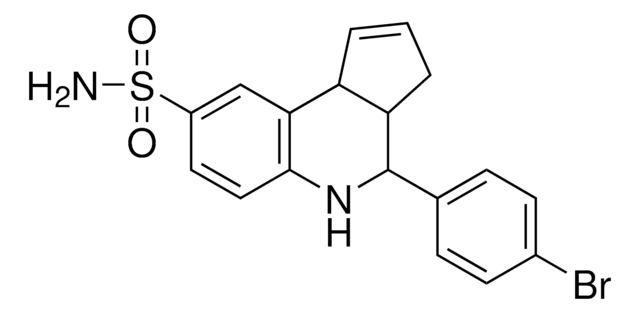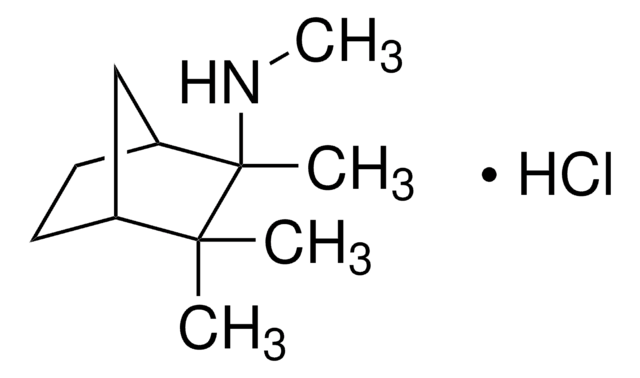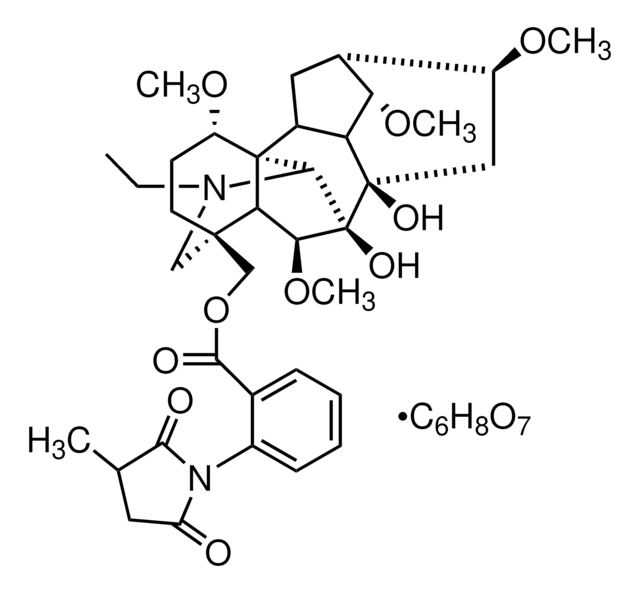SML0326
GTS-21
≥97% (HPLC)
Synonyme(s) :
3-(2,4-Dimethoxybenzylidene)-anabaseine dihydrochloride, DMBX-anabaseine, DMXB, DMXB-A, GTS21
About This Item
Produits recommandés
Niveau de qualité
Pureté
≥97% (HPLC)
Forme
powder
Couleur
faintly yellow to dark yellow
Solubilité
H2O: >5 mg/mL
Température de stockage
2-8°C
Chaîne SMILES
Cl.Cl.COc1ccc(\C=C2/CCCN=C2c3cccnc3)c(OC)c1
InChI
1S/C19H20N2O2.2ClH/c1-22-17-8-7-14(18(12-17)23-2)11-15-5-4-10-21-19(15)16-6-3-9-20-13-16;;/h3,6-9,11-13H,4-5,10H2,1-2H3;2*1H/b15-11+;;
Clé InChI
BXKYFUGAAFLYJL-BXGYHSFXSA-N
Application
- as an α7 nicotinic acetylcholine receptors (nAChR) partial agonist to elucidate its anti-inflammatory effects in mouse macrophages
- to test its protective effect on the renal injury induced by lipopolysaccharide (LPS)
- to test its effect on microvascular inflammation in endotoxemia induced by LPS
Actions biochimiques/physiologiques
Caractéristiques et avantages
Code de la classe de stockage
11 - Combustible Solids
Classe de danger pour l'eau (WGK)
WGK 3
Point d'éclair (°F)
Not applicable
Point d'éclair (°C)
Not applicable
Certificats d'analyse (COA)
Recherchez un Certificats d'analyse (COA) en saisissant le numéro de lot du produit. Les numéros de lot figurent sur l'étiquette du produit après les mots "Lot" ou "Batch".
Déjà en possession de ce produit ?
Retrouvez la documentation relative aux produits que vous avez récemment achetés dans la Bibliothèque de documents.
Notre équipe de scientifiques dispose d'une expérience dans tous les secteurs de la recherche, notamment en sciences de la vie, science des matériaux, synthèse chimique, chromatographie, analyse et dans de nombreux autres domaines..
Contacter notre Service technique
